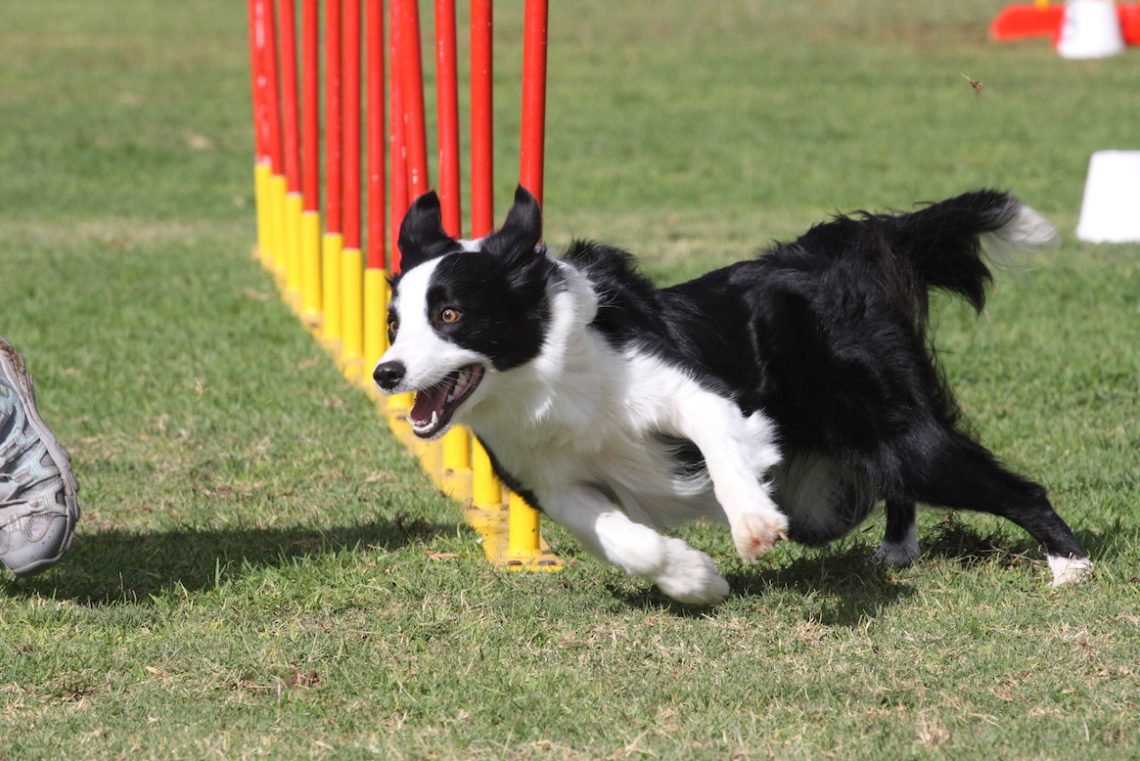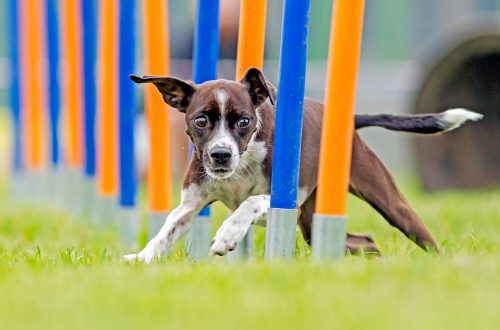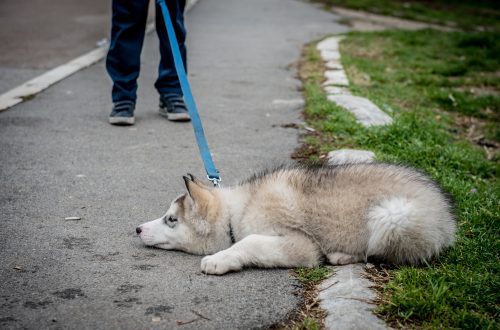
How to teach a dog endurance?
The training of this skill can be illustrated by the example of landing and maintaining this position. You need to start training by holding your pet on a leash.
Give your dog the command “Sit!” and after completing it, make the pet sit for 5 seconds;
Forcing is not the same as holding the dog with your hands. Just feed her a few bites of her favorite food during this time. The intervals between giving treats should be different. In this case, it is not forbidden to repeat the command;
If the pet tries to get up, do not let him do this by pulling the leash back;
After 5 seconds, give the dog another command or arrange a play break.
It is very important not to let the dog change its position, to stop it in time. Otherwise, she will decide that in order to get the next piece, she must get up.
After the break, have the dog sit up and hold that position for 7 seconds, also giving him the treat at different intervals. You can feed her 5-10 pieces of food. Then play with the dog again.
Make her sit for 3, 7, 5, 10, 3, 7, 3, 10, 5, 12 and 15 seconds. Continue feeding treats at varying intervals between servings.
If you need a longer shutter speed, increase it gradually, be sure to observe the variable mode. Over time, it is necessary to reduce the number of fed pieces of food and repeat the command less often. But remember that dogs live by the rule: it’s better to sit than to stand, and it’s better to lie down than sit.
If desired, you can train the dog to maintain the desired posture when you move away from it. For example, you can consider working out the shutter speed when the dog is standing:
Take a starting position, keeping the dog on a leash;
Repeat the command “Stop!” and stand facing the pet, holding it by the collar;
If the dog tries to change position, you should force him to hold the given position, for example, by pulling the collar or pushing with your hand;
Stand directly in front of the dog for a couple of seconds, then return to the starting position again. Do not forget to praise your pet, but it is important to do this only when you return to the starting position;
Do this exercise again, and then pause your workout – run or play with your pet. He deserved it.
At the very beginning of practicing this skill, stand very close to the dog so that it does not have the opportunity to move. As soon as you manage to achieve that she stands close to you for 5-7 seconds, you can safely begin to increase the distance, moving away first one step, then two, three, five. In this case, almost immediately you need to return to the dog. For the time being, increase the distance of your retreat while facing the dog, i.e. back away from it.
Watch every action of the dog, trying to get ahead of his desires and movements: when he tries to go to you, return to him yourself.
At some point, the dog will allow you to move away from him at a distance of 5-7 steps. Periodically, during the retreat, turning your back to it, introduce exercises with an increase in endurance: give the dog the command “Stand!”, move away from it 2 steps and stand for 10 seconds. Return to the starting position and praise the dog.
The training process should be varied, so it is recommended to alternate the described exercises, in addition, you should gradually increase the distance away from the dog, as well as the time during which it maintains a given position.
Over time, it will be possible to achieve that the dog will maintain the pose for up to two minutes, and you will be able to move away from it by 10-15 steps. This means that it is time to complicate the training process. There are a lot of options for complication: you can accelerate when moving away or approaching a pet, jump, squat, start playing with some object, go on a run, and even hide from a dog, for example, behind a tree.
If there are difficulties in the process, you can attract an assistant. It is necessary to prepare in advance and stretch a long leash (7-10 m) at the training site, fasten the carabiner of the leash to the dog’s collar. At this point, the assistant should unnoticed by the pet pick up the loop of the leash. If the dog tries to break away or simply change position, the assistant will be able to stop this with a jerk on the leash.
There is also an alternative option in case there is no possibility to use an assistant. You will need a clothesline (or nylon cord) 15–20 m long. A carabiner is tied to one end of the rope, and a loop for the hand is made at the other end. You will need an impromptu block, which is quite suitable for a tree, a pole, a fence post, and the like. A pre-prepared rope is thrown through it, which in this case acts as a leash, for this you need to fasten the carabiner to the dog’s collar and take the loop in your hand. During training in this format, the leash should not be taut. If the dog moves towards you, you can stop him with a jerk on the leash.







